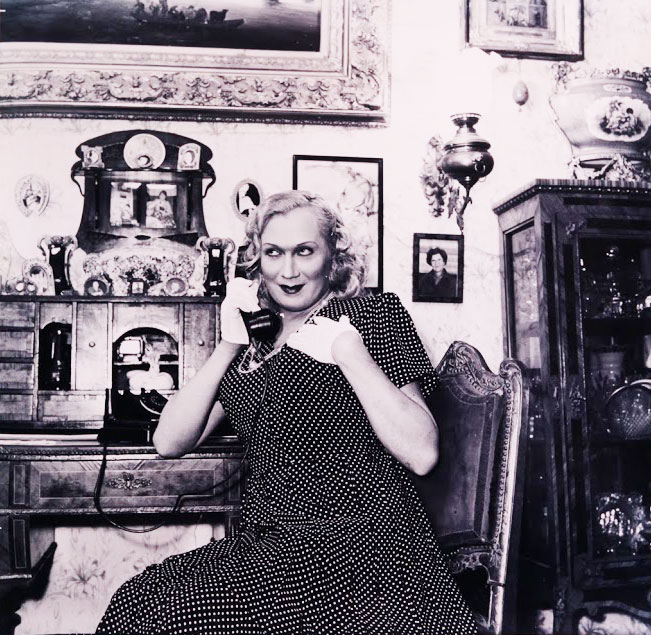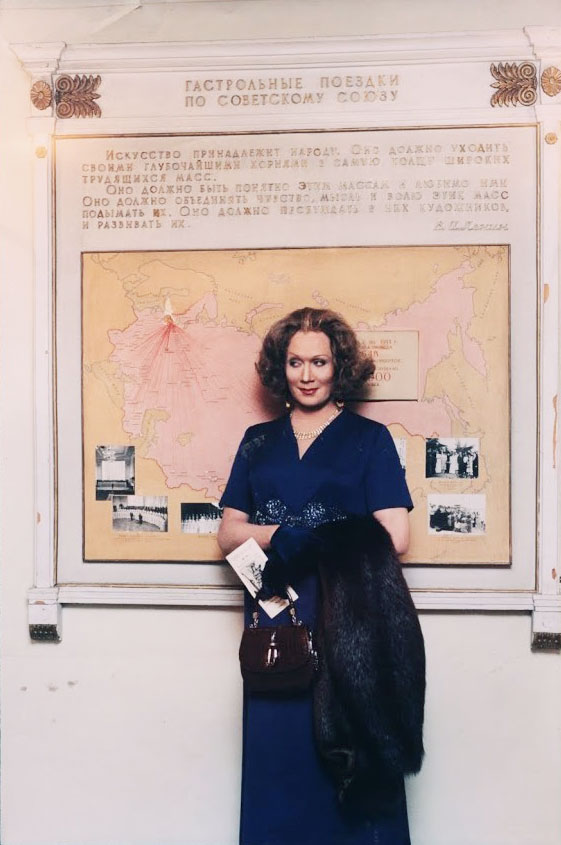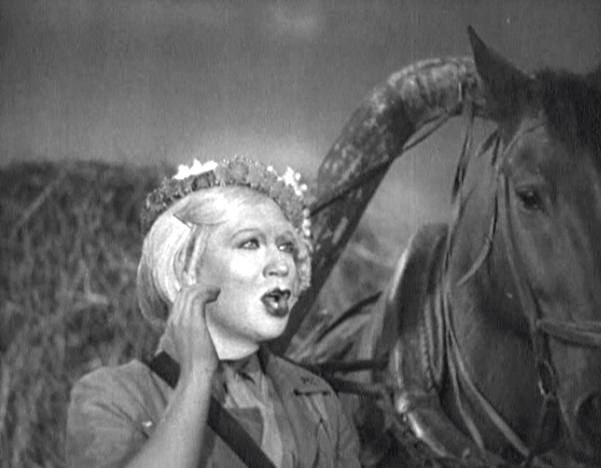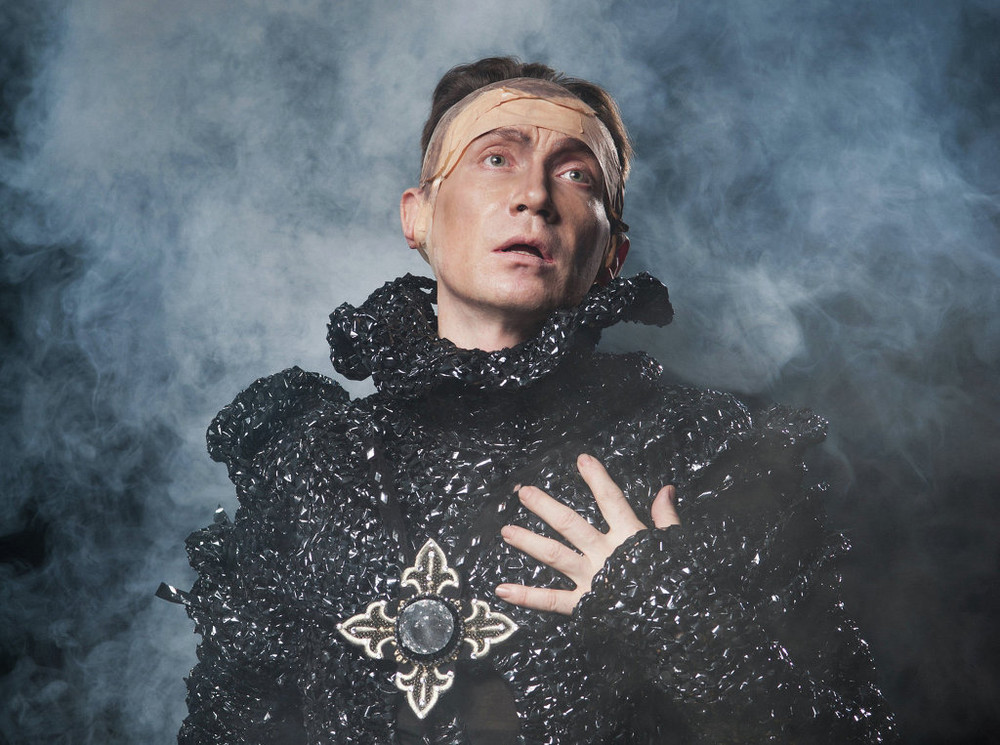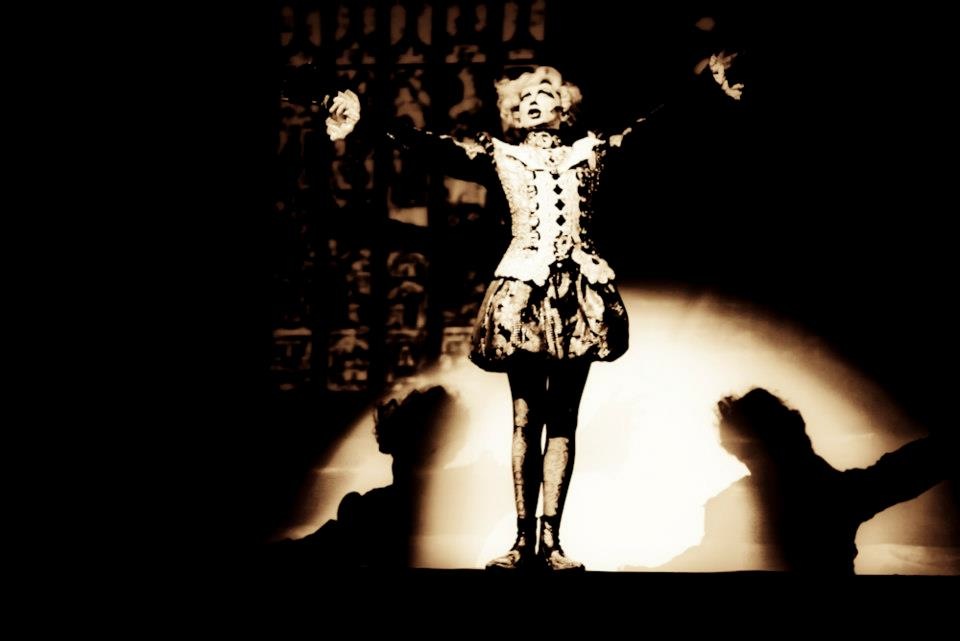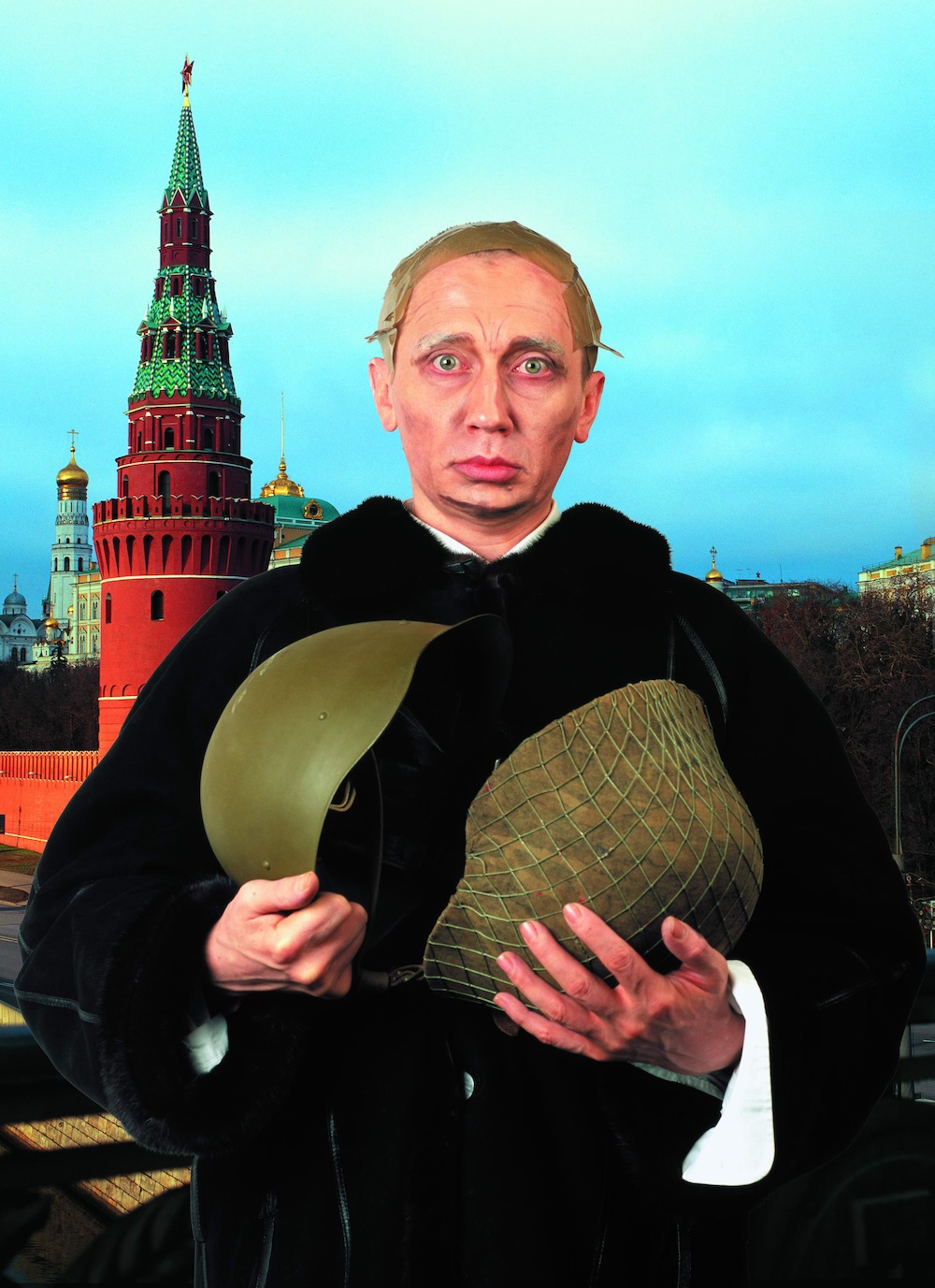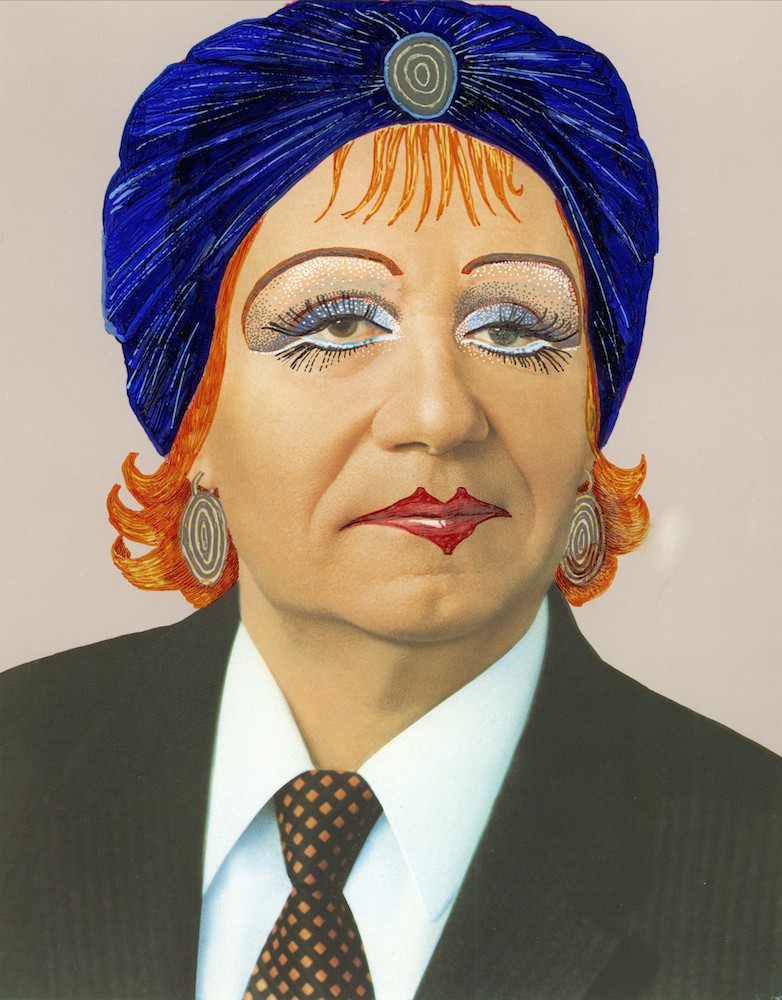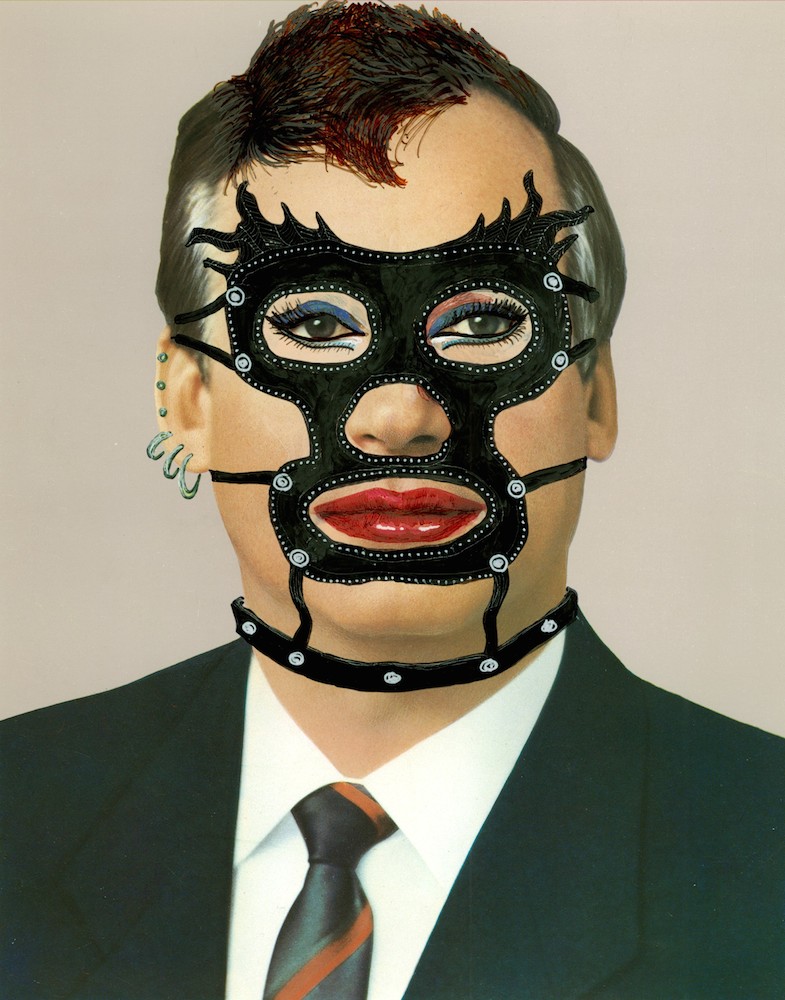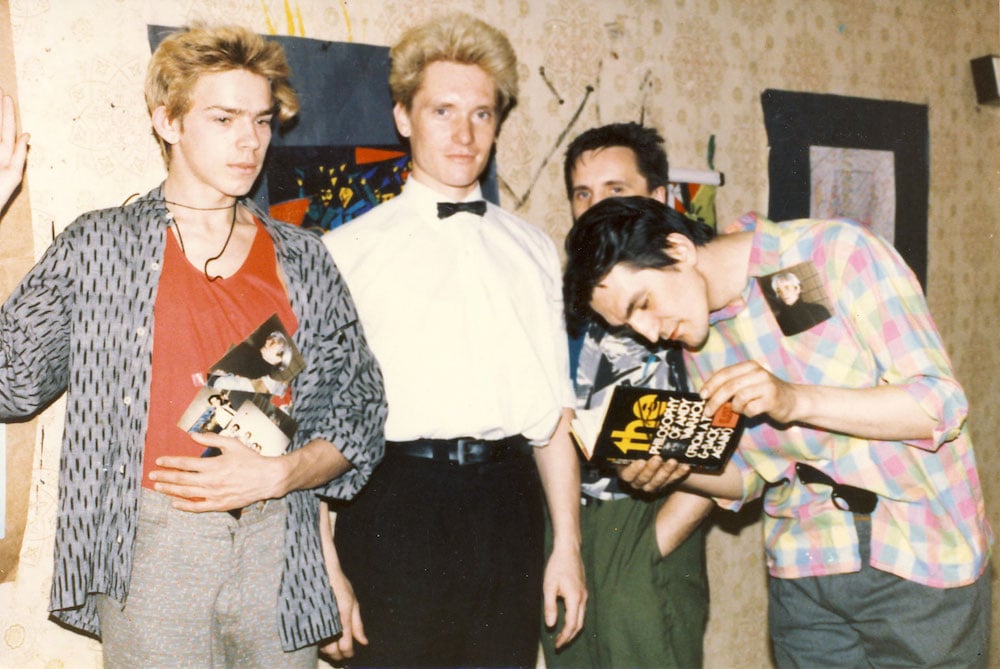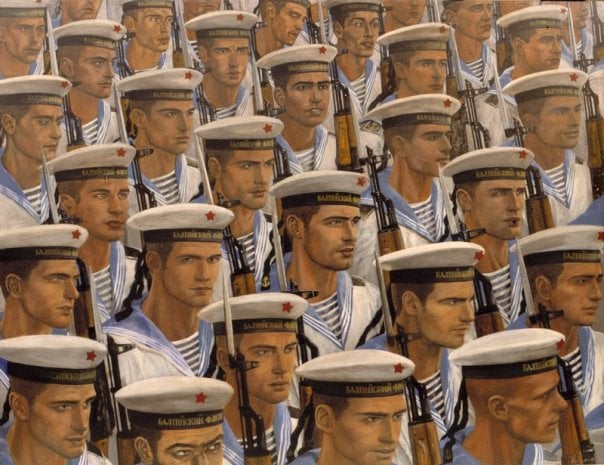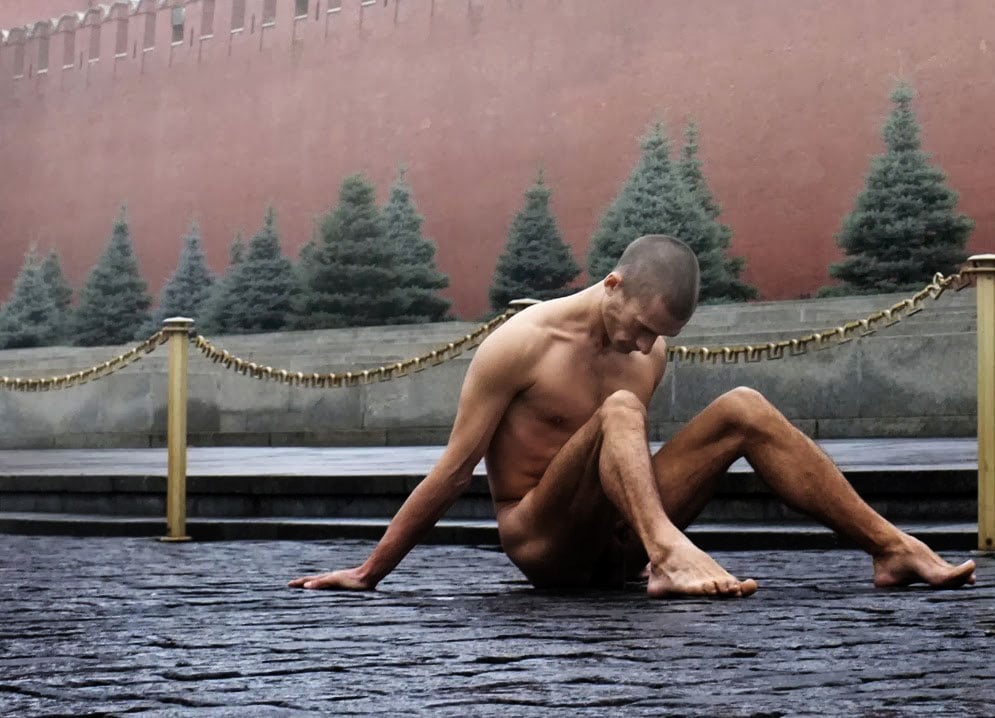Serious fun: the vital importance of the cross-dressing, role-playing artist Vlad Mamyshev-Monroe
He was flamboyant, provocative and fun. But, argue Olesya Turkina and Victor Mazin, Vlad Mamyshev-Monroe was also one of the most important artists of his generation
He was the flamboyant cross-dressing chameleon who captured the effervescent spirit of St Petersburg’s 1980s artistic underground. But, performance artist Vladislav Mamyshev-Monroe, who died last year, was much more than that. As a new retrospective show at St Petersburg’s Novy Museum shows, Mamyshev-Monroe was the last Russian artist to embrace optimism, the last great embodiment of an era of change and revolution. The curators of that show, Olesya Turkina and Viktor Mazin, explain the depths and insights behind Mamyshev-Monroe’s work with the cult of celebrity and the political culture of the Soviet Union, and make a case for him as one of the most important Russian artists of his generation.
1. The artist of perestroika
Vladislav Mamyshev-Monroe is perestroika; perestroika is Vladislav Mamyshev-Monroe. Everyone is, of course, used to associating perestroika with Mikhail Gorbachev. Vladislav Mamyshev-Monroe on the other hand, sensed the essence of perestroika and appeared on the art scene depicting Gorbachev in a radically new way.
According to Mamyshev-Monroe, the last general secretary of the Communist Party attempted a historical change by moving a whole country from a destructive male mode to a creative female one. His decision to put a woman’s red Hindu bindi on Gorbachev’s forehead epitomised the transition from masculine to feminine politics, both nationally and internationally. The feminine symbol melted the ice of the Cold War: “Democratisation, perestroika, glasnost, all this continued the work of the positive female sign and completely switched to the positive rebirth of the planet.”
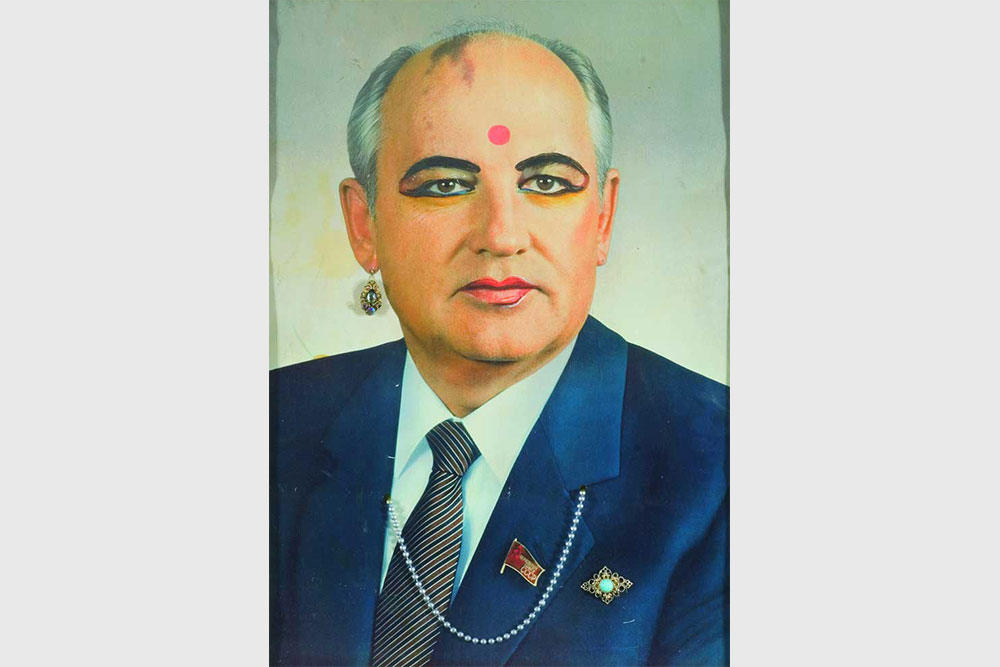
That portrait of Gorbachev by Mamyshev-Monroe appeared on the cover of many western magazines. The artist always felt that this switch from masculine to feminine ideology was influenced by the icon that was Marilyn Monroe. In Mamyshev-Monroe’s imagination Gorbachev appears as a woman. The paradox of Mamyshev-Monroe’s art is that had he not come across Marilyn, there could have been no Gorbachev.
2. Marilyn Monroe calls on Vladislav Mamyshev
The story of Mamyshev’s obsession with Monroe — the genesis of his dual identity — starts in school. During a geography class on “the victims of imperialism”, the teacher shows students an image of Monroe, the star that was devoured by the evil machine of showbusiness. Mamyshev falls in love instantly. For him, 1985 was the year in which he was born again. He stops drawing Hitler, Lenin and other members of the Communist Party and starts depicting only Her — Marilyn Monroe. A major contribution to this obsession was the film Some Like It Hot, the only Monroe film for rent in the Soviet Union. Mamyshev disappears into cinemas and libraries where he studies everything about her.
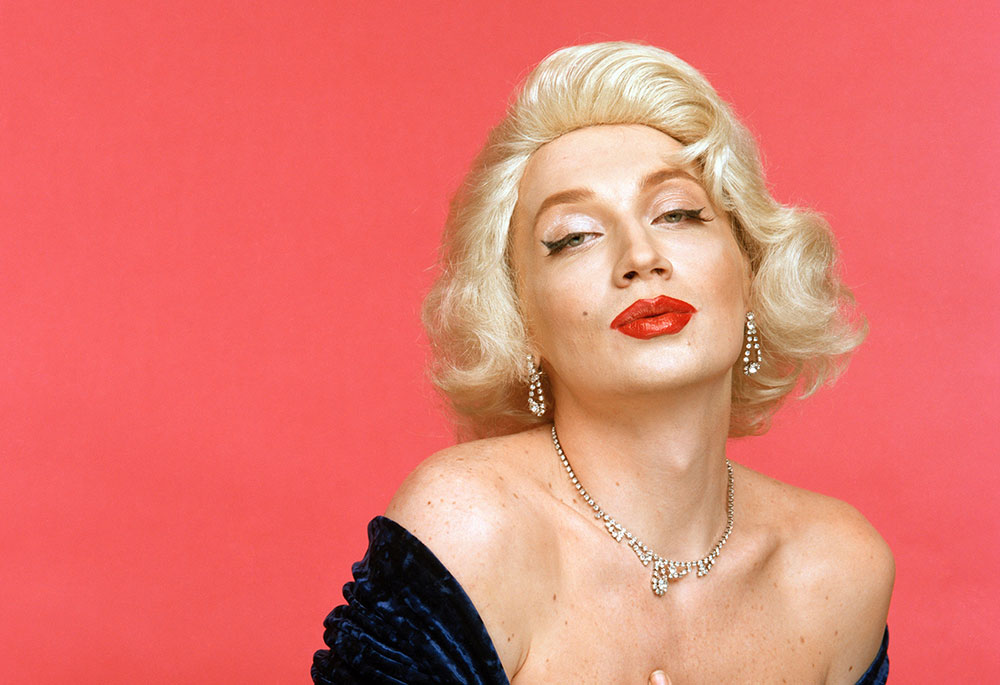
The complete transformation takes place at the Baikonur Cosmodrome where Mamyshev does his military service. Whilst working in an entertainment club at the cosmodrome headquarters, he makes himself a wig, finds a dress, does his make-up and takes some photos of himself as Marilyn Monroe. This is the very beginning of 1989. After a few months, Mamyshev-Monroe returns to Leningrad; reincarnated as a woman, he joins Sergei Kuryokhin’s Popular Mechanics orchestra on stage and puts on his first ever exhibition — Women in Art.
Everyone turns into Marilyn Monroe: Mamyshev himself, members of the Politburo, even Arnold Schwarzenegger. Marilyn Monroe becomes the transitional image. Through her image individuals can be reincarnated further, becoming whoever they want.
“Nature willed it so that within my personality three subjectivities merged, that of Adolf Hitler, Marilyn Monroe and myself”
Contemplating the fate of Marilyn Monroe leads Mamyshev to create his own theory — monrology. The essence of monrology is a constant dialectical battle, and the simultaneous fusion of opposites: of the feminine and the masculine, of good and evil, of Marilyn Monroe and Adolf Hitler.
3. Three in one
The collages, scratched photos and drawings of Mamyshev-Monroe always exhibit two opposing images and symbols. And sometimes even three. The triad emerges during the early 1990s, out of the artist’s developing notion of monrology. This is how he describes the triune self — the coming together of three subjectivities:
“Nature willed it so that within my personality three subjectivities merged, that of Adolf Hitler, Marilyn Monroe and myself, Vladislav Mamyshev (which is either an additional subjectivity, or the unifying one). Or to be more precise, the subjectivity of Vladislav Mamyshev consists of two equal parts: the subjectivity of Hitler and the subjectivity of Monroe. In this way, the one completes the other, intensifies it and neutralises it. And all of this is happening within me, which I have finally learned to recognise, analyse and use in my work.”
4. Monroe-ness and exploding stars
Mamyshev-Monroe became the first critic of the newborn love of glamour and cult of celebrity that emerged in the post-Soviet era. He simultaneously played the role of a fairy-tale hero and the narrator of that fairy tale. In such an intertwining, so-called fiction and so-called reality often interchange. In his performances, staged photos, movies, videos, photo albums, magazines, television programmes, paintings, drawings, scratched pictures and texts, Mamyshev-Monroe discovered a way of seeing the world from the perspectives of many different people. Thanks to this optical scheme, he himself became vulnerable to multiple subjectivities.
The artist tried on the images of Soviet actress Lyubov Orlova, of Lenin, Putin, of fictional Soviet superspy Stierlitz, of Charlie Chaplin, Catherine the Great, Queen Elizabeth I… The last image he recreated was that of Shakespeare’s Polonius. He was a star artist. He depicted stars, he loved them, criticised them, and pushed their images to the brink of disintegration, as in his series StarZ, where he depicted a pantheon of media-stars against the backdrop of the red star that tops the towers of the Kremlin.
Mamyshev-Monroe was a techno-agent in the entertainment industry, a secret actor in the theatre of public life. The artist is the question, and the question is that of the future: “Where does your image work best? Who is it for? What is it selling: crisps, washing up liquid, fizzy drinks, watches?” In the world of branding, where things are dematerialised and importance is placed on the flows of capital and information, the body is disassociated from the image. The image exists in a separate, virtual world. Compared to Marilyn Monroe, contemporary stars are replicable. They are alienated avatars in the media world. You could say that Mamyshev-Monroe is a man from the future, but you could equally say that he is from the deep past, a shapeshifter from a fairy tale.
5. His first love: the Party
Mamyshev-Monroe was steeped in the principles of Soviet bureaucracy. Until his death he saw himself as a member of the Politburo. When his heroes died, he took on their image. He swapped the aggressive male sign for the female. Mamyshev-Monroe said that he purposely created a plan to save the members of the Politburo, who in an emergency would be forced flee in women’s make up. That was his plan to save the political pantheon. These “members of Politburo” wore make up when they were buried.
“For some people art is art; for me, it’s my personal life.”
Mamyshev-Monroe showed how bureaucracy survives any ideology, how it puts on new masks. He became an artist while one ideology was dying and a new one was only just emerging. He hymned heavenly bureaucracy in the final beams of divine glory. In his art he developed a particular bureaucratic discourse and created his own apparatus of state, headed up by Vladislav Mamyshev-Monroe-the-Sun. Systematic bureaucracy, unveiled by the artist in his journals, wall displays and themed folders, demonstrates its perverse rule. Mamyshev-Monroe didn’t criticise any particular regulations, as did his precursors and contemporaries, but the very discourse of the master. Perhaps, this can be termed as true activism in a symbolic sphere.
6. The exhibition: discourse and narrative
Our exhibition, The Life of the Marvellous Monroes in the New Museum is a story within a story — by the artist and about the artist. Mamyshev-Monroe was a wonderful storyteller. He created narratives — series of works in which he was reincarnated in a variety of personas.
The exhibition is an entwining of several discursive strands. It is organised using two discursive themes that were of the utmost importance for Mamyshev-Monroe: bureaucratic-political discourse and psychedelic fairy-tale discourse. On one floor you have Members of the Politburo: Gorbachev and Monroe-Schwarzenegger alongside the stars of modern politics, who share the exhibition space with wall displays created by the artist. Here you can find his de-ideologised Lyubov Orlova. Another floor shows the brilliant series Russian Questions and Life of Marvellous Monroes shining with gold and silver foil (a material the artist often used). In a secluded over-18s-only corner is the series Lolita.
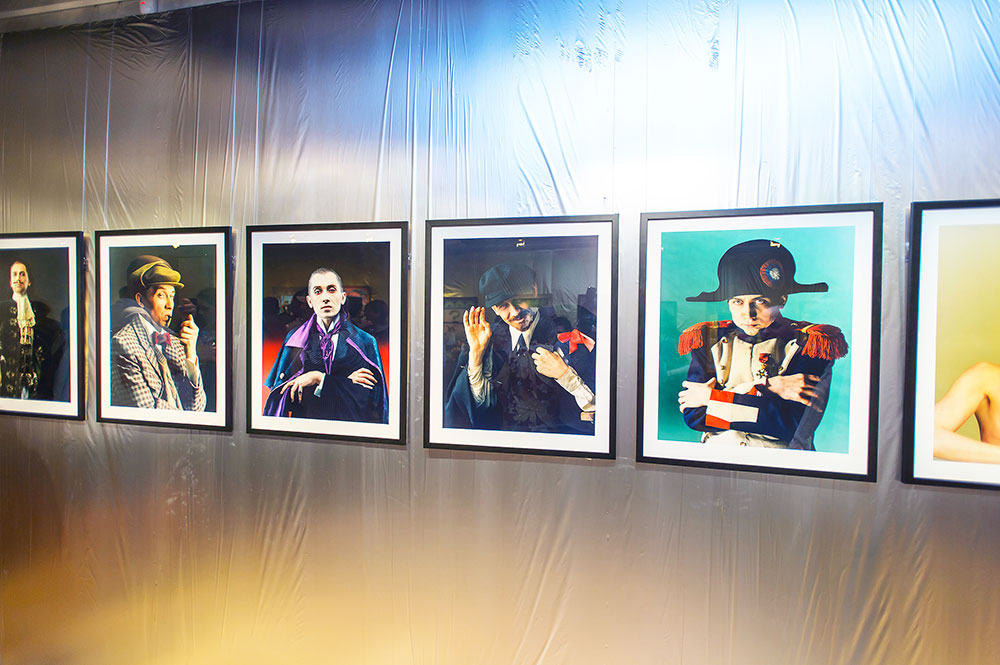
This is the first retrospective of the artist’s life. The aim is to show the full complexity and richness of his art, which cannot be reduced to “cross-dressing” or to “turning into a woman”. As Mamyshev-Monroe himself said: “For some people art is art; for me, it’s my personal life.” He discovered and used new techniques. He renewed the relationship between art and politics. He became the symbol of perestroika, of its freedom, of its joyous madness, its seemingly endless opportunities. It could be said that, with his tragic death just over a year ago, the era of change is finally over.
The Life of the Remarkable Monroe runs until 6 August at Novy Museum
